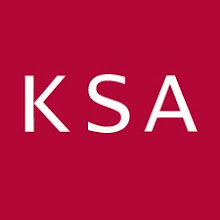Facility managers rely on an integrated team of support staff, vendors and contractors to ensure proper daily maintenance of their facilities. Each player in this complex team relies on trusting relationships to ensure that a facility’s operations are rigorously supported. Successful facility managers expect and trust that their vendor’s knowledge of various building functions are often better than their own. They also trust that the vendor is equally committed to the right solution, weighing alternatives with the facility’s best interests in mind. Unfortunately, one uncommitted player in the mix can cause the entire support structure to fracture. Establishing a committed level of dedication among any support team requires the development of a “culture of service” in which all vendors, consultants and contractors feel fully engaged in a facility’s operational success.
To achieve a “culture of service”, organizations must develop an approach which communicates the importance of commitment to their support team and provides the tools for strengthening, understanding and empowering individuals. In an effort to develop such a strategy for their own organization, KSA Interiors adopted a service methodology aimed at developing a deep level of understanding with their partners. Easily adapted into any organization, this process, titled “Best in the World”, distinguishes between the ideals of serving someone to the best of your ability and providing someone with the best possible service.
The foundation of this process exists in adopting five key behaviors - “Elicit-Empathize-Empower-Enthuse-Eject”. These keys foster the understanding necessary to become an extension of your partner’s organization. “Best in the World” contractors understand how to elicit a deep understanding of a situation or problem and empathize from the perspective of their client. They have empowered employees who have the willingness and authority to act on their client’s behalf and who build enthusiastic relationships focused on their client’s success, ejecting processes or procedures that hinder rather than help solve problems.
When a vendor asked Andrew Grove, then CEO of Intel Corporation, how to gain more work from the computer chip manufacturer, he replied “Go out and learn how to make chips, and then help us do it better”. Intel’s varied team of supporters understands that their primary purpose is to put their talents to use in helping Intel improve its own ability to do business. From landscaping to R&D, or from facilities to sales, every employee, consultant, and vendor shares the same overriding job description: to help their client’s organizations perform better at what they do.
The free eBook “Best in the World – A Client Centric Approach” details the five keys identified above, and outlines a process for becoming an integral part of any organization’s success. To download the free eBook
click here
Christopher M. Good, CID, ASID, LEED AP
Chris is an Associate Principal at KSA Interiors, an award winning interior design firm located in Glen Allen, Virginia
 I have an extreme love for museums and galleries (just ask my husband, who on a recent trip to Colorado, had but one request: “no museums”. I still managed to sneak in a gallery or two!). As a designer, I’m inspired by the obvious: art and artifacts. Museums and galleries are where I experience the works of masters and novices alike. I find the innovation of both very inspiring, whether it’s form, function or aesthetics. I am also moved by the act of meandering through a museum… it feels a bit like a treasure hunt. It’s so easy to lose yourself in the quietness and just give yourself over to the things you enjoy. So many senses are stimulated: the perfect air quality is delightful, the lighting is soft and complimenting, the voice on the audio guide is soothing… there is no schedule, there is no iphone or email. There is just you and exhibit. Oh, and let’s not forget the museums themselves. As a girl living in Europe, my family visited many famous museums. As a teen living in the DC suburbs, I just couldn’t get enough of the Smithsonian. In my 20’s, I went to Spain specifically to see the Guggenheim in Bilbao. Now I am fortunate enough to live in Richmond and have the marvelous VMFA in my backyard. This love for museums has inspired me for as long as I can remember… how fortunate am I?
I have an extreme love for museums and galleries (just ask my husband, who on a recent trip to Colorado, had but one request: “no museums”. I still managed to sneak in a gallery or two!). As a designer, I’m inspired by the obvious: art and artifacts. Museums and galleries are where I experience the works of masters and novices alike. I find the innovation of both very inspiring, whether it’s form, function or aesthetics. I am also moved by the act of meandering through a museum… it feels a bit like a treasure hunt. It’s so easy to lose yourself in the quietness and just give yourself over to the things you enjoy. So many senses are stimulated: the perfect air quality is delightful, the lighting is soft and complimenting, the voice on the audio guide is soothing… there is no schedule, there is no iphone or email. There is just you and exhibit. Oh, and let’s not forget the museums themselves. As a girl living in Europe, my family visited many famous museums. As a teen living in the DC suburbs, I just couldn’t get enough of the Smithsonian. In my 20’s, I went to Spain specifically to see the Guggenheim in Bilbao. Now I am fortunate enough to live in Richmond and have the marvelous VMFA in my backyard. This love for museums has inspired me for as long as I can remember… how fortunate am I?




